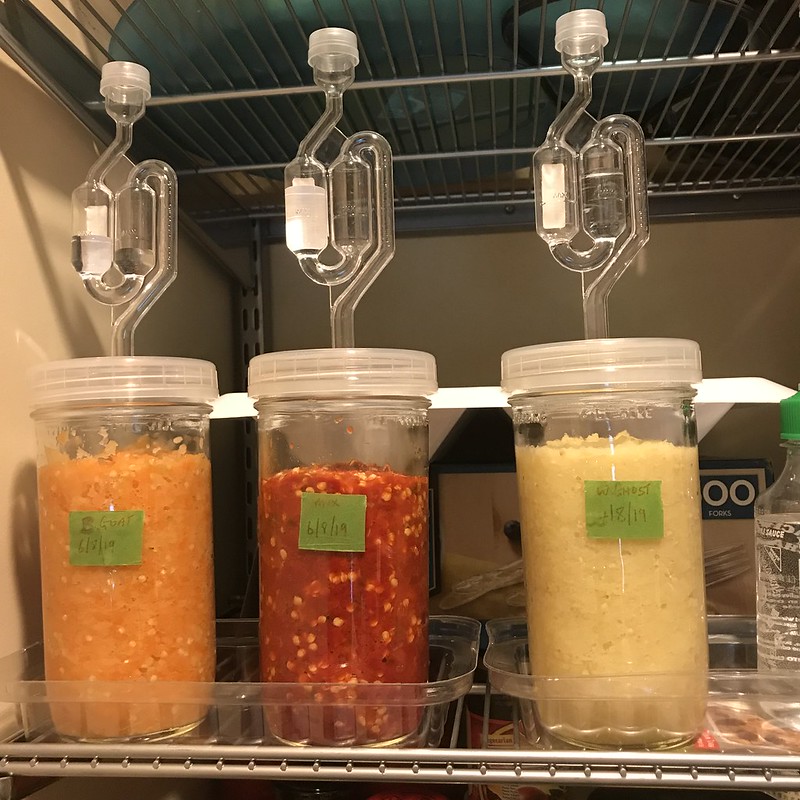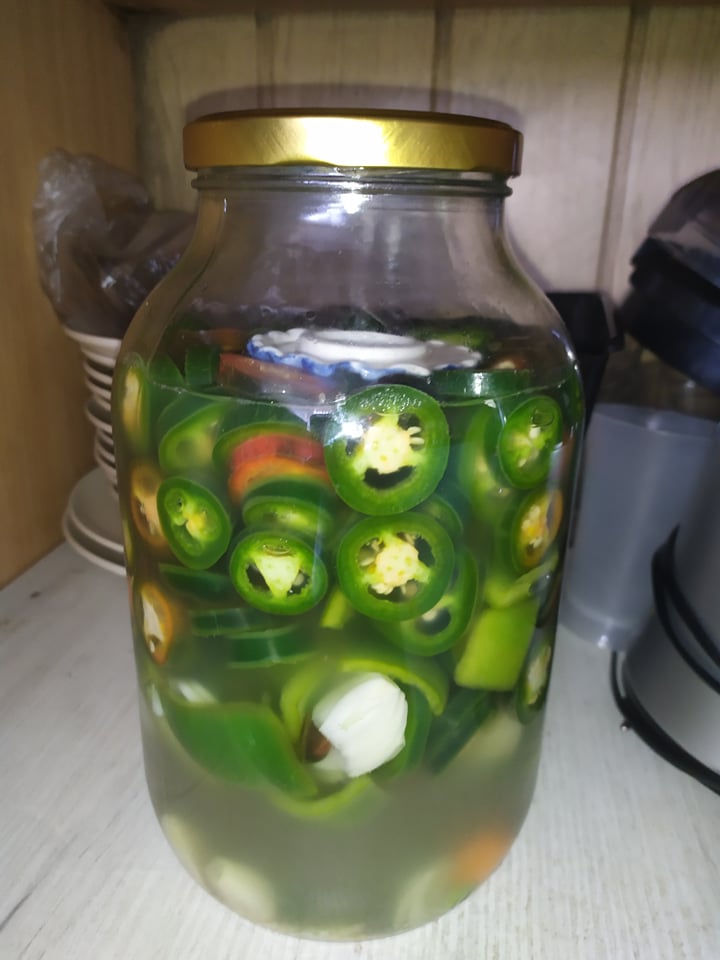This is such a painful thread..

I'm sorry, but this should be "un-pinned" and allowed to fade into the archives....57 pages of semi-useless (mostly?) , and often times, conflicting ( and sometimes dangerous) information.
Fermentation 101...should /(could) consist of a jar of peppers, some salt, a little water. and a
SCALE in (1)
one post...then closed to further confusion and opinion.
Weigh jar...in grams
Put peppers in jar...
Completely cover (submerge) peppers with water..
Weigh jar again
with included peppers (and any other veg added to the mix) with water...in grams This is
VERY important... Do NOT just mix a salt brine to pour over your peppers (veggies))
!!!
Subtract jar weight
Do the math to suit your salt % (ie)
weight of
peppers+(w/)water x .025 for 2.5% in grams of salt needed.
Weigh your salt..in grams
Pour small amount of water from jar & peppers into
weighed salt and stir to dissolve.
Return salt and water to pepper jar
Submerge the floating contents of jar with a cabbage leaf with a weight. A little canning jar works well as a weight when trapped under the lid of the main jar to hold the cabbage leaf down under the brine. (Not too tight so co2 can escape) Use an airlock if you got it.
Set back and relax for 20-90 days and wait for the magic to happen.






